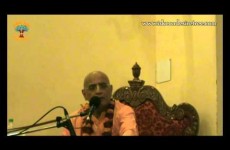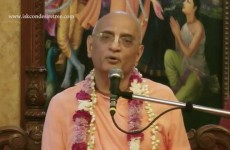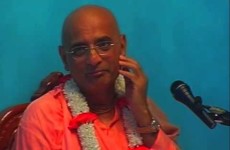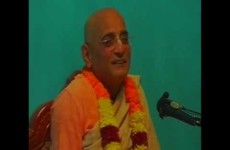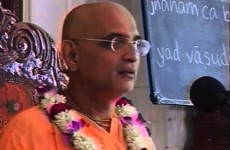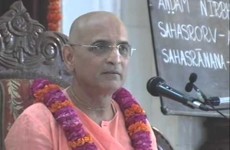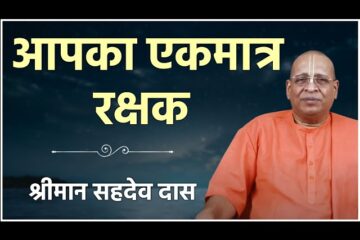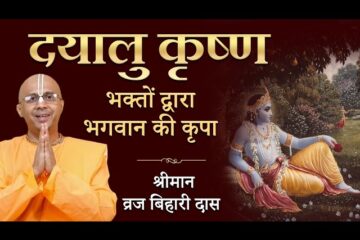When the religion of the Vedas became weakened due to the influence of less intelligent men who blindly performed ritualistic ceremonies and wantonly killed animals in the name of Vedic injunctions, Buddha appeared on the scene as a great reformer. Totally rejecting the Vedic literature and substituting his rational, atheistic views, Buddha advocated the path of ahimsa, (nonviolence and nirvana-the negation of reality as we know it) as the ultimate goal of life. Soon after, the philosophy of Shankaracharya overpowered Buddhism and spread throughout India.
The authority of the Upanishads and other Vedic literature were revived by Shankara and employed as weapons to fight the Buddhist doctrine. Interpreting the Vedas to draw a particular conclusion, Shankara established the doctrine of non-dualism, adwaita-vedanta, stating that all living entities were on an equal level with God. He prominently stressed those texts which afforded an answer to the rationalistic atheism of the Buddhists, yet the teachings of Shankara were not wholly theistic, and thus a further unveiling of the ultimate reality was destined. That destiny was fulfilled through Shri Ramanujacharya.
Ramanuja was born in India during the year 1017 A.D. when, according to astrological calculations, the sun was in the zodiacal sign of Cancer. His parents were Asuri Keshava and Kantimati, both from aristocratic families. Rumanja passed his childhood days in Shriperumbudur, the village of his birth. At the age of 16 he was married to Rakshakambal.
Only four months after his wedding, Ramanuja’s father was struck with a severe illness and died. Upon the death of his father, Ramanuja became head of the household and decided to move to Kanchi, a holy city famed for its scholars and magnificent Temples.
[To know more in detail, visit – http://gaudiyahistory.com/ramanujacarya/]
[For more Videos, visit – www.harekrishnatube.com]












